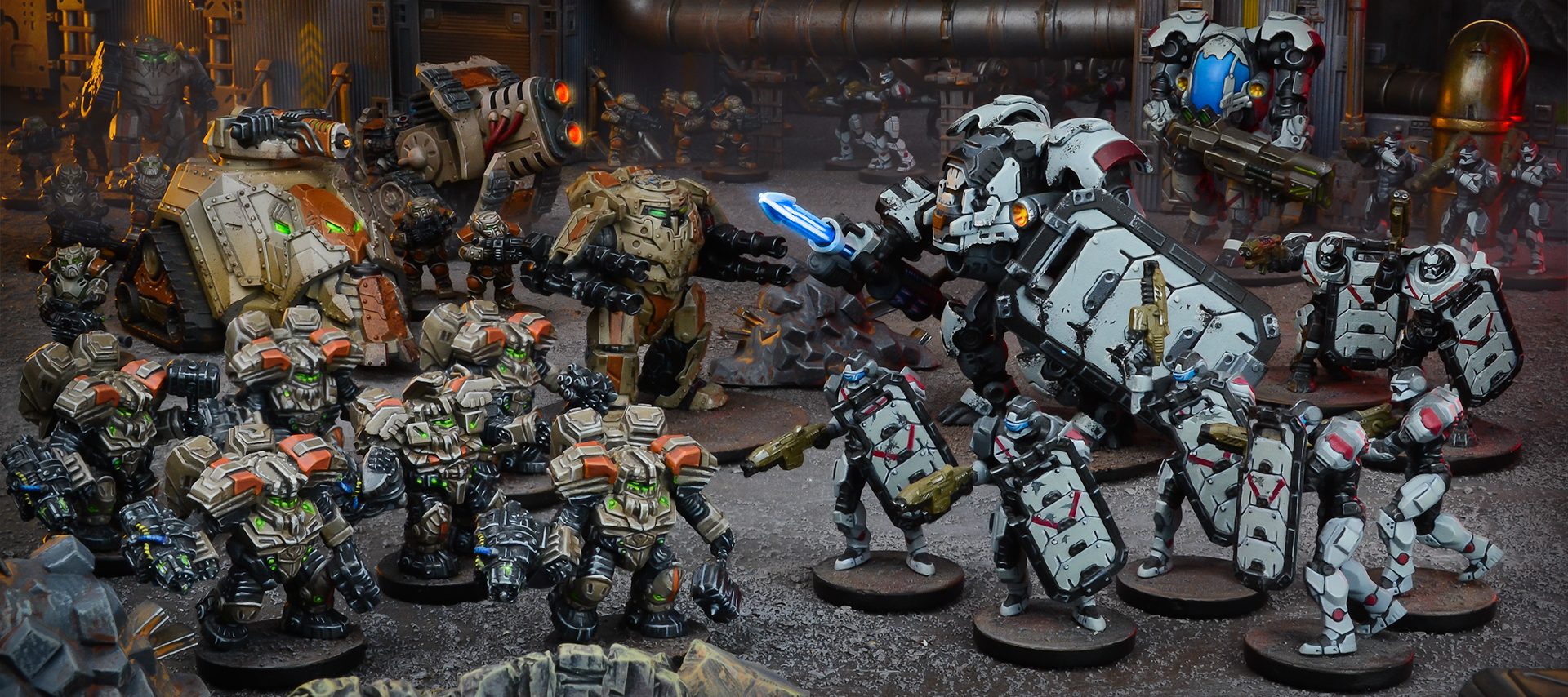
Mantic: Warpath – The Basics – Units and Movement

As armies clash, the fate of a world hangs in the balance.
Warpath: Firefight gives you a great set of rules to fight in sci-fi battles across the tabletop, using our spectacular range of miniatures. In the next few articles, we’re going to go over the basics of playing the game to provide an overview of the rules so you can get a good idea of them before playing. We’ll take you through the various aspcts of playing the game, before going over advance rules and building your armies. If you want to learn more, you can pick up the Firefight rulebook here, or download starter rules for Firefight from our Website!
Units and Activation

This unit of Thorgarim is led by a veteran, standing at the front.
From Enforcers to Veer-Myn, every miniature in Warpath: Firefight is part of a unit. Units are split into two categories – infantry and vehicles. Most units will have multiple models –usually five to ten – and will fight together on the battlefield. A few, such as vehicles and commanders are single model units. Every unit in Firefight must have a leader at all times – so if your unit leader dies, you must nominate their ‘lucky’ replacement. These units and their leaders can be customised with powerful weapons or hi-tech equipment to make them better in the heat of battle. Each player will bring their army of units to the tabletop to face their opponent.
Firefight uses an Alternate Activation system. This means that each player takes it in turns to activate one of their units to move, shoot or fight, then the opposing player does the same. The two players pass activations between them until all units have been activated. This makes games dynamic as you try to plan ahead but also react to your opponent’s actions on the battlefield.

Plague and Veer-Myn forces clash in the ruins of a GCPS outpost.
During their activation, units can make either one long action or two short actions (similar to Deadzone). Short actions include moving, shooting, and regrouping (which removes suppression – covered later on). Long actions include assaulting, performing a double move, disengaging from combat, going into overwatch (delaying your activation until later in the turn) and rallying (regrouping, but better).
Movement
Movement is used in many different parts of the game. You will need to move your troops around the field to capture objectives, get into range to use their weapons, take cover in buildings, or tackle the enemy in close combat. Movement is very simple – every unit has a Speed stat, which is the number of inches that they can move as part of an action. A unit can move in a straight line, or turning any number of times during their move to avoid obstacles. You can move into and out of terrain freely and through friendly units. You must end your move more than 1” away from other units.

Enforcer Jetbikes scout ahead of the main force.
Movement can also be done as part of a double move action, where the unit moves twice its Speed, but can only exit or enter terrain once per turn. If you disengage from combat, then you have to perform a double move to get away from the enemy. Finally, in addition to reducing suppression, Rallying allows you a free Move action. As you can see from this, games of Firefight tend to be very mobile as forces attempt to outmanoeuvre each other to accomplish their goals.
Don’t forget you can pick up the Warpath rules and armies from our website or you local retailer! In our next article we’ll be covering shooting and line of sight – stay tuned!
